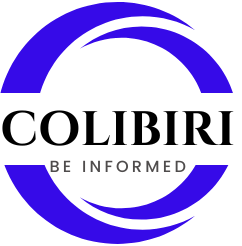Dynamic Workflows vs Static Workflows : Which Structure Is Best for Your Automations?
In today’s fast-moving work environment – where data evolves in real-time, customer expectations are increasingly personalized, and communication channels are multiplying – automation can no longer be rigid. That’s why Artificial Intelligence (AI) fits naturally into dynamic workflows – flexible, adaptable, and intelligent – while static workflows show their limits.
In this article, we’ll:
- Define the difference between these two types of workflows
- Illustrate them with business use cases
- Show how AI enables greater agility
- Highlight the risks of static workflows
- And guide you toward a smarter, more adaptive setup
🔗 Start here: Automating Workflows with AI – The Complete Guide
🔗 See also: Levity: Automate Business Tasks Without Code
- Static vs Dynamic Workflows : Definitions
Static Workflows
A static workflow follows a fixed, linear path, defined in advance.
Each step is triggered manually or automatically based on predefined rules.
Common examples:
- Invoice processing: receive → validate → pay → archive
- Sending an email after a form submission
- HR approval process with multiple validation levels
Advantages: simplicity, clarity, quick setup
Limits: not adaptable to change or exceptions
Dynamic Workflows
A dynamic workflow adapts to context : it changes behavior based on real-time data, AI decisions, or external triggers.
Examples:
- Lead qualification based on website behavior
- Client follow-up adapted to the tone detected in their emails
- Ticket analysis and automatic redirection based on content
Advantages : flexibility, intelligence, efficiency
Requires more advanced tools, often with embedded AI
- Business Use Cases
HR – Static Workflow:
New employee → onboarding checklist → training → feedback
HR – Dynamic Workflow with AI:
Profile analysis + AI → personalized onboarding path + content recommendations + adaptive timing based on user engagement
🔗 See: Notion AI to Automate Internal Documentation
🔗 Read also: Tally + ChatGPT: Smart Forms with Automated Generation
- Why AI Works Better with Dynamic Workflows
AI brings three key benefits to dynamic automation:
- Real-time Adaptability
Example: GPT generates a personalized email based on recent customer behavior (instead of a static pre-written message).
- Processing Unstructured Data
Example: Superflows reads an incoming email and detects the need for a follow-up task.
- Learning and Continuous Optimization
Example: AirOps adjusts its reporting recommendations based on previous usage patterns.
- The Risks of Rigid Workflows
- Lack of reactivity: your system can’t respond to weak signals in time
- Poor customer experience: responses are always the same, regardless of the context
- Difficult maintenance: changing one rule may require rebuilding the entire flow
- Missed opportunities: leads or issues go unnoticed without dynamic analysis
- How to Move from Static to Dynamic Workflows
Step 1 – Audit Your Current Workflows
Identify where data changes frequently or exceptions are common.
Step 2 – Introduce AI-Compatible Tools
🔗 Example: Levity, Parabola, AirOps
Step 3 – Use Scalable No-Code Platforms
Like Bardeen to automate actions contextually inside your browser
Step 4 – Track Results
Measure gains in agility, processing time, and personalization quality
Static workflows have served their purpose—but their limits are now clear. If you want to take full advantage of AI, you need to structure your processes to be adaptive, contextual, and intelligent.
Tools like Levity, Bardeen, Notion AI, or AirOps already allow you to build dynamic workflows without writing a single line of code.
📎 Related articles:
